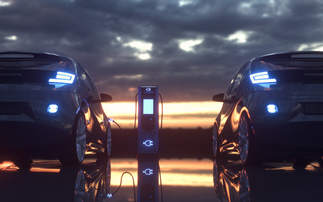Jeremy Leggett surveys global progress against SDG7, and considers what must happen to deliver on the targets by 2030
The UN's Sustainable Development Goals (SDG) are nearly four years old, and 10.5 years remain before the 2030 target for eradicating poverty via sustainable development. Of the 17 SDGs, SDG7 - affordable and clean energy for all by 2030 - ought to be one of the easiest to hit. But a recent summary of progress involving the pooled efforts of the International Energy Agency (IEA), International Renewable Energy Agency (IRENA), the World Bank and the World Health Organisation shows that we are already well behind the pace.
There are four sub-targets in SDG7: universal access to electricity, universal access to clean fuels and technologies for cooking, a substantial increase in the share of renewable energy in the global energy mix, and a doubling of energy efficiency. Let me consider each in turn, and then discuss how to fix the shortfall in progress.
The first sub-target is universal access to electricity by 2030. Efforts to date have taken us from 1.2 billion people without access in 2010 to 840 million in 2017. This has improved the quality of life significantly for tens of millions of households across the developing world. But on the current rate of progress, a projected 650 million people are likely to remain without access to electricity in 2030, and nine out of 10 of these will be in Sub-Saharan Africa.
A recent report by the Global Off Grid Lighting Association (GOGLA) and Lighting Global shows the steepness of the hill that must be climbed. GOGLA's member companies, which include almost all enterprises that sell quality-accredited products, sold 3.9 million solar lighting products globally in the second half of 2018. All told, the solar lighting industry has sold just 42 million of these products, anywhere, ever. If we were to envisage one light per household, and assume five people per household, we would need to sell 840 million divided by five = 168 million more lights. (Note that the 42 million does not include unaccredited poor-quality generic products, including counterfeits, which add perhaps 70 per cent to the global sales total, according to GOGLA).
Looking at the trends since 2010, the hill seems even more daunting. Global solar lighting sales have essentially stalled since since 2015/16. This despite annual investments at a much higher level from 2016 through 2018 (>$900m in all) than in the years of rapid growth in solar lighting sales from 2010 through 2015 (c. $300m). The reason for this mismatch between investment levels and sales volumes is that investee solar manufacturers and distributors have focused on higher price / higher margin products involving multiple lights and batteries. The hundreds of millions of dollars in investment during the last three years, provided by 43 investors, have gone to just 11 companies. As the GOGLA report understatedly observes: "Among GOGLA members, many companies reported a need for additional investments, to help the sector grow further." This means that the solar lighting industry is growing sales of large lighting products to the better off, but failing to get anywhere near enough single light products to the poorest households.
SolarAid, the organization I founded in 2006 to try and catalyse solar lighting markets in Africa, knows all about the difficulty of disseminating solar lights. We have very recently sold our two millionth solar lighting product, just under five per cent of the global total deployed, most of them in the period 2012-2016. SolarAid has enjoyed successes, suffered failures, and accrued considerable learnings in this process. I do not have space to discuss them here, but I do so in a pictures-and-charts history of the organisation on my website.
The second sub-target is access to clean cooking solutions. Efforts to date have increased the proportion of the global population with access to clean fuels and technologies for cooking from 57 per cent in 2010 to 61 per cent in 2017. But with population growth outpacing annual growth in access to the solutions, almost three billion people remain without.
The annual average increase in access was just 0.5 per cent between 2010 and 2017. This must increase to three per cent if we are to reach the target of universal clean cooking by 2030. If it doesn't, the IEA estimates that current trends will leave 2.2 billion people dependent on inefficient and polluting energy sources for cooking in 2030.
The use of wood is steadily declining, but currently charcoal usage is increasing, especially in Sub-Saharan Africa. Improved biomass cookstoves and cleaner gaseous fuels (including as much biogas as possible) must increasingly replace these fuels, and kerosene. If this can be achieved, we begin to address other development goals, notably those involving human health, the environment, and gender equality. The prize would be great. Notably, because of the household air pollution that dirty fuels create, universal access to clean cooking solutions would help prevent some 3.8 million premature deaths each year, primarily among women and children.
The third sub-target is a substantial increase in the share of renewable energy in the global energy mix. According to a recent IRENA report, 83 per cent of solar PV and 77 per cent of onshore wind due to be commissioned in 2020 should produce cheaper electricity than any fossil fuel option. This is due to spectacular and widely unanticipated cost-down learning curves for these technologies. Accordingly, one would think there are no barriers to the acceleration of renewables. Yet almost incredibly, 2018 was the first year of stalled growth after two full decades of strong worldwide annual expansion. As IEA executive director Fatih Birol puts it: "The world cannot afford to press 'pause' on the expansion of renewables and governments need to act quickly."
The stall is also reflected in renewables investment, which was down for the second year running in 2018, to $304bn. Fossil fuel investment meanwhile was up, to $1.22tr. Fatih Birol's view is bleak: "the appetite to push low carbon investments and policies is slowly fading".
But the gap in both investment and capacity addition should not be too difficult to close. New net capacity from renewables increased by about 180 gigawatts (GW) in 2018: some 60 per cent of the net additions needed each year to meet Paris climate goals. To achieve those goals would require capacity expansion of 300GW a year through 2030, according to the IEA. I explore the eminent feasibility of this in a recent blog on my website. Solarcentury, for example, is on track to deliver around 1GW of new capacity each year. Accordingly, the target translates into a need for only 300 Solarcenturys, if we use the IEA numbers. There are some obvious caveats to that back-of-envelope approach, as I discuss in the blog. One is the reliability of the IEA number. If we use arguably more realistic assumptions than the IEA's, we would need a few hundred more Solarcentury-type companies. But that should still be eminently doable, if just a few of the steps I outline at the end of this article are taken.
The fourth target is a doubling of energy efficiency. Efforts to date have seen global primary energy intensity (defined as the percentage drop in global total primary energy supply per unit of gross domestic product) fall by 10 per cent between 2010 and 2016. The annual rate of improvement to 2030 needed for SDG7 exceeds 2.7 per cent. The rate of improvement stood at a mere 1.3 per cent in 2018.
Yet the IEA's Efficient World Scenario finds huge cost-effective global energy-efficiency potential. Their scenario calculates the effect if all countries maximised all available cost-effective efficiency potential between now and 2040. They find, for example, that we could have 60 per cent more building space in 2040 for no additional energy use, industry could provide nearly twice as much value per unit of energy, and transport energy demand could stay flat even with a doubling of activity.
Let me close with ten examples of how we could get back on track with SDG7, and indeed all the other Sustainable Development Goals. The list is far from comprehensive, and I do not have space here to go beyond assertions. I set out justifications for each point in a pictures-and-charts blog on my website. My basic argument is that correcting course would prove easy if just a few of the following steps were taken.
First, regulators need to tell financial institutions what they must do, not just advise what they should do. After all, many regulators now profess that climate change and stranded assets are threats to global financial stability. These threats justify a degree of enforced diversion of capital for survival, just as in a mobilisation for war.
Second, governments and progressive financial institutions should join forces to make a plan to bring the trillions of dollars of "dead money" in the capital markets into play in achieving the SDGs.
Currently too much sits in pension funds, insurance groups, endowments, family offices and savings accounts, playing little or no role in supporting the SDGs.
Third, the rich need to invest much more in a viable future and/or generally be more generous, if they want their children to have such a future to live in. And if they can't do this, they need to be forced to by governments introducing wealth taxes. Tiny taxes would do fine, given the vast sums built up by the obscene inequality in a world where one per cent of the global population own 85 per cent of the wealth.
Fourth, tech companies should pay just a little back to a global society they have taken so much from in recent years. They own a trillion-dollar offshore cash pile that is actually a giant bond portfolio. And governments should force them to deploy at least a part of it for SDG support if they won't do it voluntarily.
Fifth, governments need to end the staggering $5.7tr in annual subsidies for fossil fuels. This is, after all, something which many of them have already agreed to do. An example of how dysfunctional these subsidies are: annual subsidies for kerosene for lighting amount to around $7bn, yet simply donating a $5 solar light to all c.170 million households globally without electricity - which would amount to the most basic fulfilment of the first SDG7 sub-target - would require well under $1bn.
Sixth, every institution and individual should pay a small price for their carbon emissions for funding of the SDGs. Some already do, but a mass movement of volunteer companies and individuals doing so - in the absence of governments' continuing collective inability / unwillingness to agree a global regime of carbon taxes - would make a huge difference.
Seventh, oil companies and/or governments should name an end year for kerosene sales, in the same way some governments have for coal and petrol cars. This end year should be 2030, consistent with SDG and Paris targets. All the oil companies then have to do is sell a lot of solar lights from their forecourts.
Eighth, corporations should match what they do in the developing world with what they are increasingly doing in the developed world. For example, they should commit to 100 per cent renewable power in all their developing-world operations and supply chains, and unlock in their retail operations the savings that solar lighting could make for their customers.
Ninth, governments should (finally) crack down on money laundering and tax evasion, and use some of the enormous proceeds to fund the SDGs.
Tenth, governments should divert a tiny fraction of the $1.8tr global military expenditure to funding the SDGs. After all, there will ultimately be no genuine security unless we eradicate poverty on a global basis.
Jeremy Leggett is the founder of Solarcentury and SolarAid








